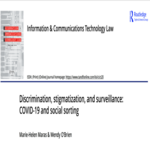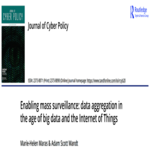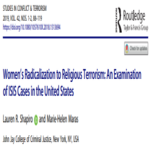The SECI model and darknet markets: Knowledge creation in criminal organizations and communities of practice
Marie-Helen MarasJana ArsovskaAdam Scott WandtKenji LogieMelanie Knieps
This study examines darknet markets through the lens of a business theory on knowledge management. Taking epistemological and ontological dimensions into consideration, this study uses Nonaka’s (1991) SECI model as a theoretical framework to identify and describe how tacit and explicit knowledge is created and shared on Silk Road, Pandora and Agora darknet markets, and how people affect this process. By studying this process, insights can be obtained into darknet market criminal organizations and communities of practice and their impact on the continuity and resilience of illicit darknet markets. This project used data from the Internet Archive collection of publicly available darknet market scrapes between 2011 and 2015 from Branwen et al. (2015). We observed instances of the SECI model (socialization, externalization, combination, and internalization) on darknet markets in both criminal organizations and communities of practice. Darknet market leaders and groups facilitated both knowledge creation and sharing. This study is the first to test the SECI model on darknet markets. The study provides an understanding of the complexity and resilience of darknet markets, as well as valuable information to help guide law enforcement agencies efforts to stop the illicit trade of goods and services.
This project used data from the Internet Archive collection of publicly available darknet market scrapes between 2011 and 2015 from Branwen et al. (2015). We observed instances of the SECI model (socialization, externalization, combination, and internalization) on darknet markets in both criminal organizations and communities of practice. Darknet market leaders and groups facilitated both knowledge creation and sharing. This study is the first to test the SECI model on darknet markets. The study provides an understanding of the complexity and resilience of darknet markets, as well as valuable information to help guide law enforcement agencies efforts to stop the illicit trade of goods and services.
Maras, M.-H., Arsovska, J., Wandt, A. S., Knieps, M., & Logie, K. (2024). The SECI model and darknet markets: Knowledge creation in criminal organizations and communities of practice. European Journal of Criminology, 21(2), 165-190. https://doi.org/10.1177/14773708221115167
The article can be found here: https://journals.sagepub.com/doi/10.1177/14773708221115167








